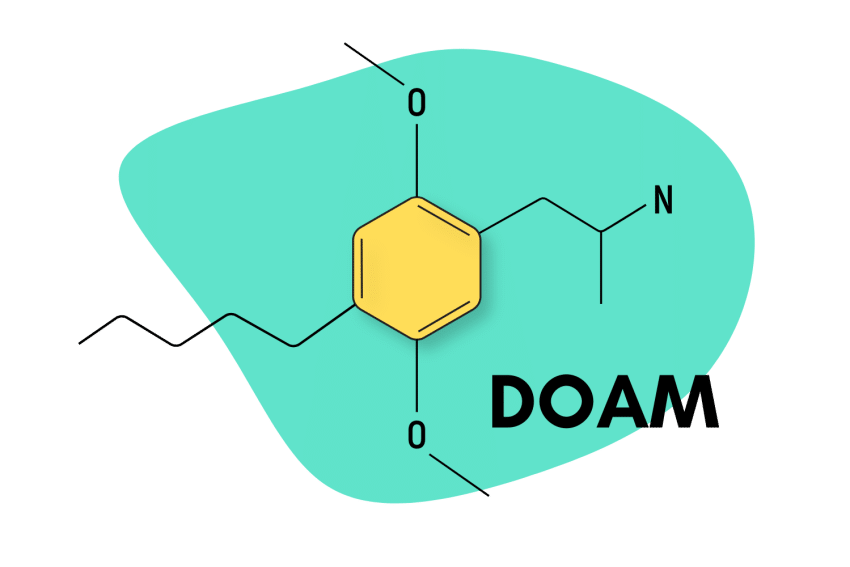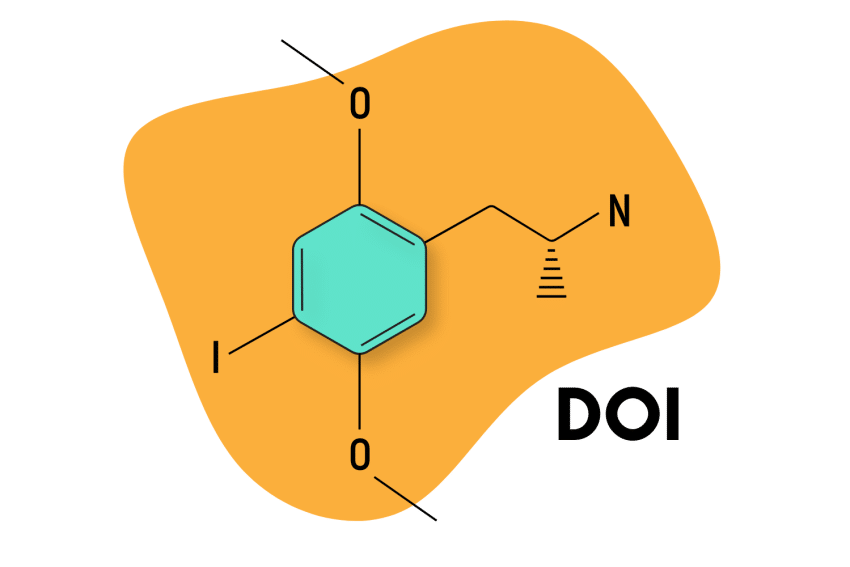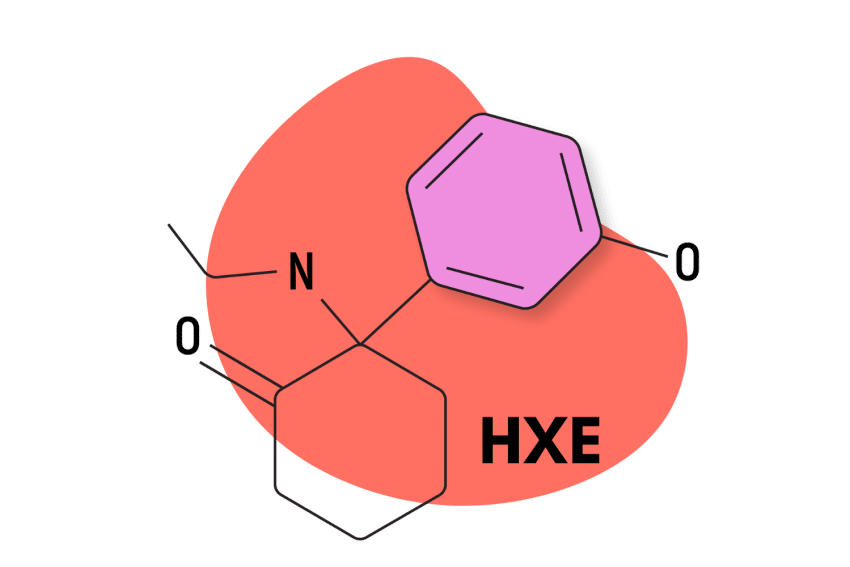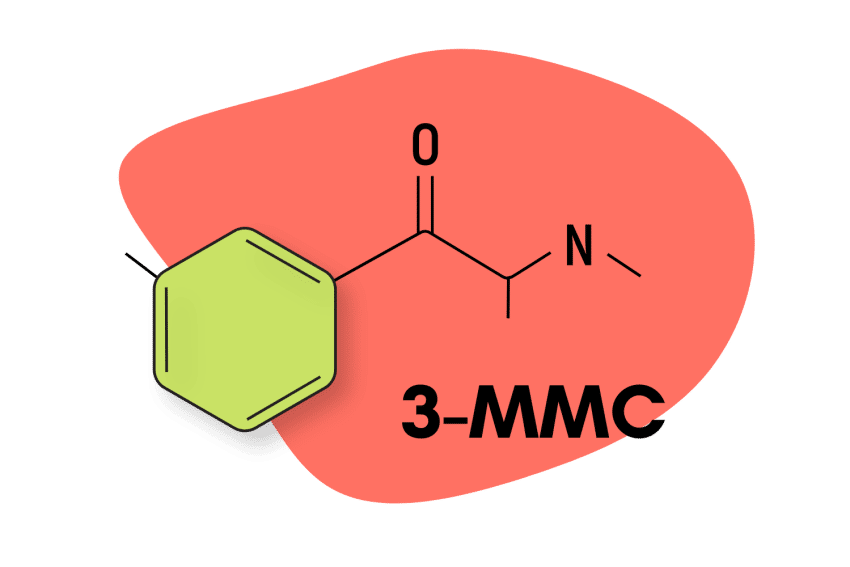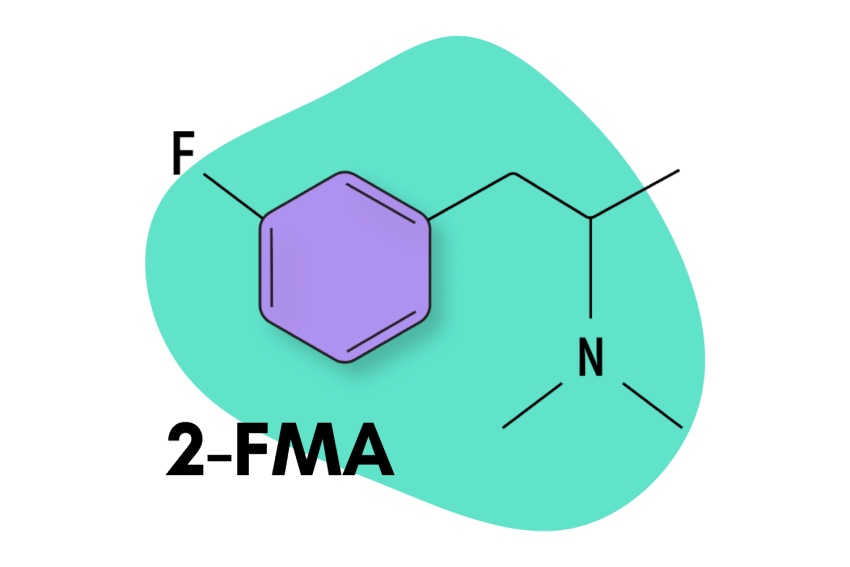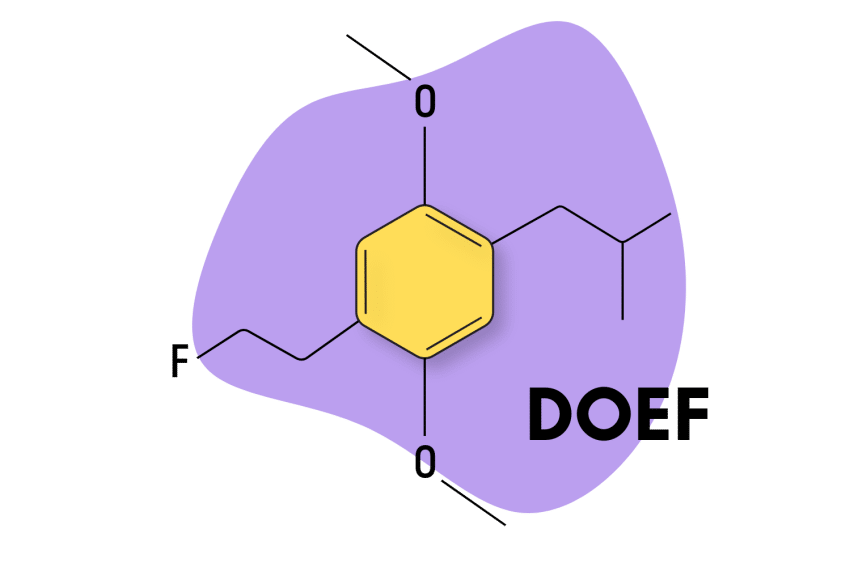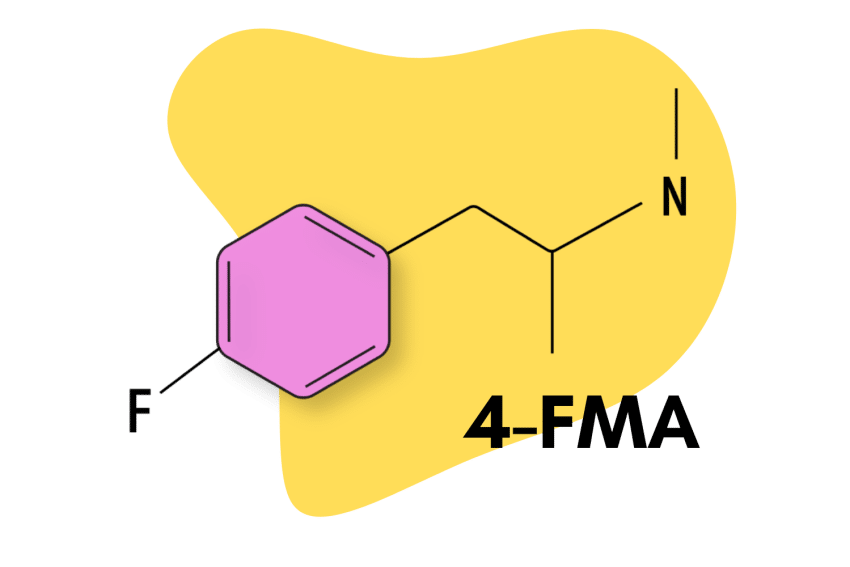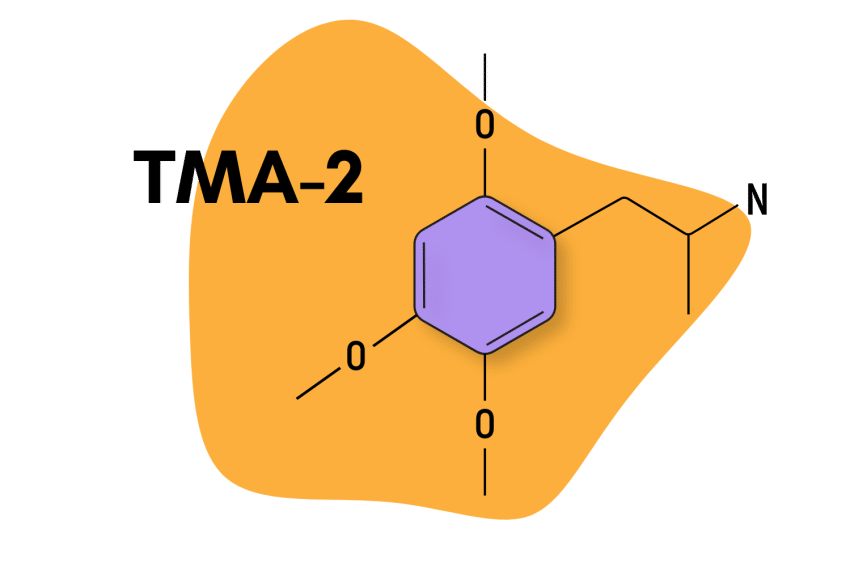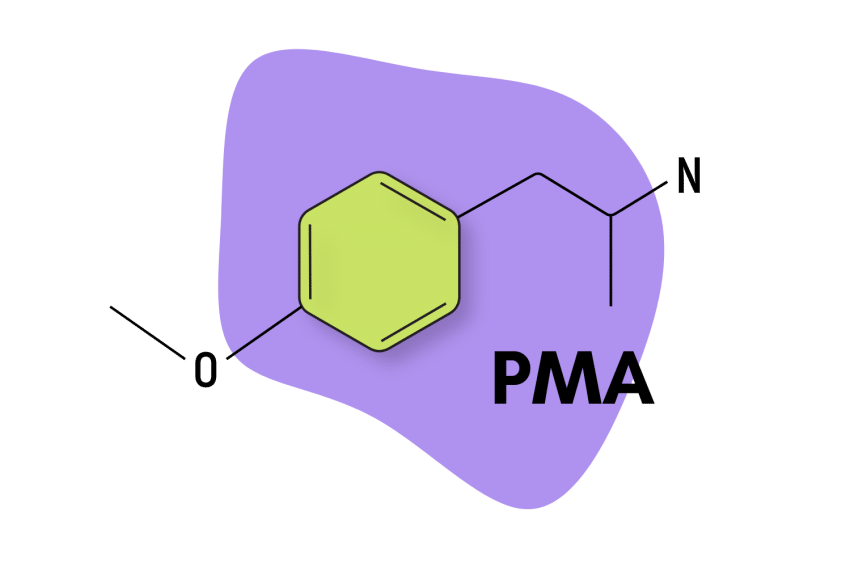DOC (4-Chloro-2,5-Dimethoxyamphetamine): Everything You Need to Know
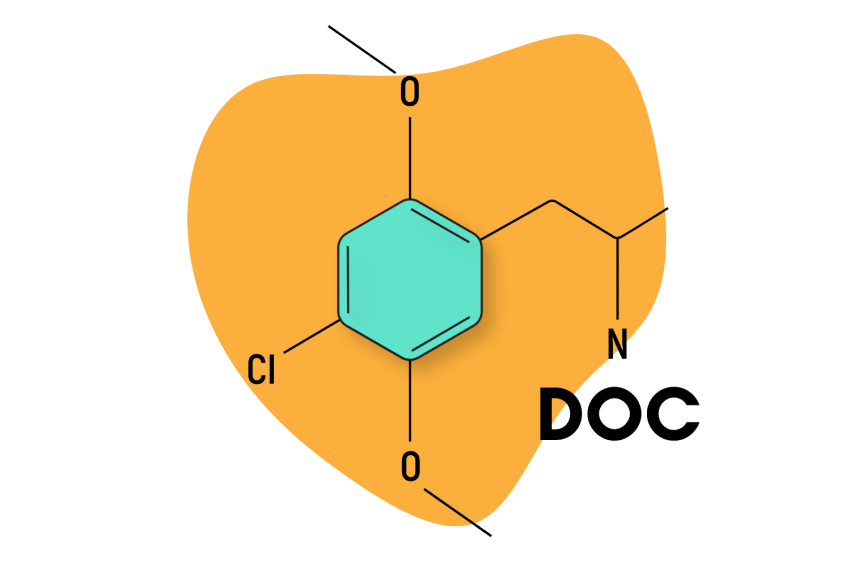
What is DOC?
DOC (4-Chloro-2,5-dimethoxyamphetamine) is a psychedelic substituted amphetamine of the DOX subtype. It’s also a member of the larger, mescaline-inspired phenethylamine family.
DOX compounds hold a high degree of structural similarity with 2CX drugs, the largest difference being their base amphetamine molecule. DOC, in particular, is the amphetamine analog of 2C-C.
DOX compounds are known to be extremely potent, enough to deliver psychedelic doses on blotter paper. The only other classes of drugs potent enough to remain active at sub-milligram doses are lysergamides, benzodiazepines, and the NBOMes.

Another particularity of this subtype is the delayed onset of effects.
It can take up to three to four hours for these compounds to kick in, often leading to mistaken re-dosing under the assumption the drugs were faulty.
The research on DOC’s psychedelic effects is scant, but it’s believed to be in the mold of other DOX compounds, meaning it possesses strong psychedelic effects with considerable stimulation and a potent “body high.”
DOC Specs
| Chemical Name | 4-Chloro-2,5-dimethoxyamphetamine |
| Level of Risk | Low |
| Other Names | DOC |
| Most Common Side Effects | Anxiety, paranoia, increased heart rate, and “bad trips.” |
| Duration of Effects | 12 to 24 hours |
| Estimated Threshold Dose | 0.5 mg |
| Common Dose | 1.5 mg to 2 mg |
| Legality/Status | Research Chemical |
| PubChem ID: | 542036 |
| CAS# | 123431-31-2 |
Trip Sitter Safe DOC Guidelines
- 🐍 I understand why psychedelics should be treated with respect
- ⚖️ I’m familiar with the laws for DOC in my country & state
- 🍄 I’m familiar with and confident in the dose I’m taking
- 🧪 I’ve tested a sample of the substance I’m using with a drug-testing kit
- 💊 I’m not mixing any medications or other substances with DOC
- 🏔 I’m in a safe & comfortable environment with people I trust
- 🐺 One of the members of my group is responsible and sober (AKA a trip sitter)
- ⏳ I have nothing important scheduled for after the trip
- 🧠 I’m in a sound & healthy state of mind
- ❤️ I don’t have any underlying health issues — don’t take DOC if you have underlying heart, neurological, or psychiatric disorders
- 👭 Use the buddy system — DOC can remove your inhibition and allow you to make unsafe decisions, always stay with people you trust, and never go out alone
- 🌵 I understand the risk of dehydration — it’s easy to become dehydrated on DOC, so make sure you’re drinking a cup of water every hour while using DOC
- 🦻 Protect your hearing — music can be intoxicating while on DOC, but protect your hearing and bring ear protection before you go out to a club or concert
How Does DOC Work?
No studies have independently confirmed this theory but, like the other members in its subtype, it’s believed that DOC acts as a highly selective partial agonist to serotonin receptors, specifically the 5-HT-2 family, which consists of three receptors subtypes: 5-HT2A, 5-HT2B, and 5-HT2C.
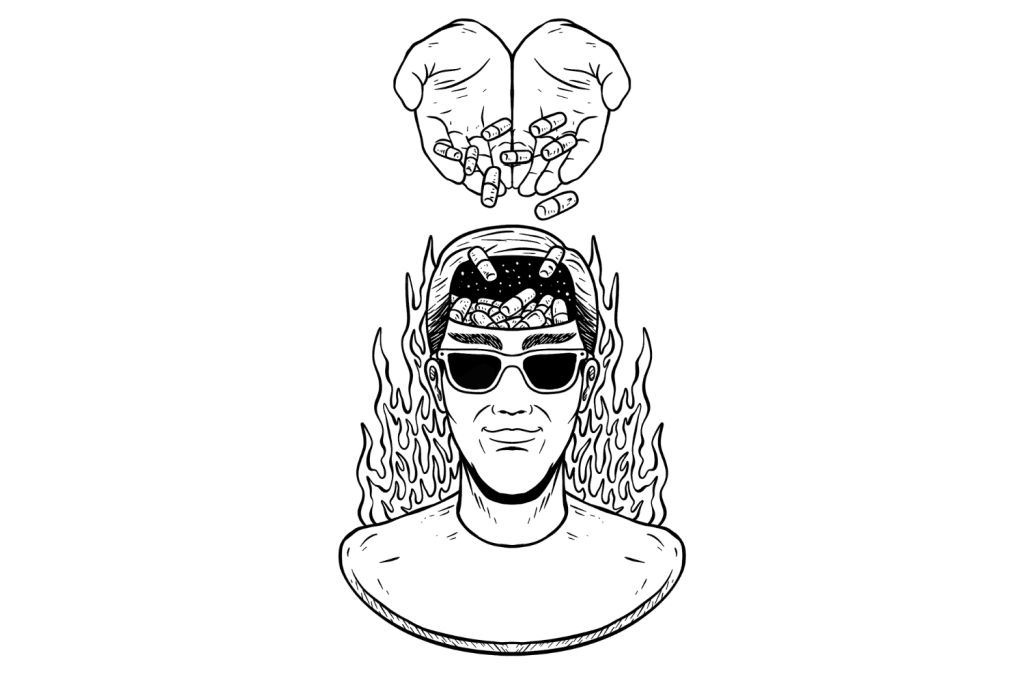
Studies have found that the psychedelic effects of substituted amphetamines and other hallucinogens are primarily mediated by the 5-HT2A receptors. However, the actual mechanisms by which psychedelia is produced are poorly understood, and the action of 5-HT2B and 5-HT2C is also important. Untangling the individual functions of different receptors and how they combine to produce the effects profile of a given drug is a highly complex matter, and much research is still ongoing.
For instance, research has shown that the 5-HT2B receptor is targeted by MDMA and is the primary enabler of its empathogenic effects [1]. Meanwhile, the 5-HT2C receptor has been shown to have several antagonistic functions in relation to 5-HT2A, meaning that some of their effects work to opposite ends within the body.
What Are The Effects of DOC?
Besides their psychoactive effects, psychedelics have actually been found to have plenty of beneficial effects on the body. But for now, let’s focus on the psychoactive effects.
Human testing on the effects of DOC is non-existent.
The only data we have about the specific qualities of its psychedelic profile are subjective self-assessments found in online drug forums mixed with our own testing.
This method is lacking in scientific objectivity, but it usually produces enough knowledge for users to be able to sketch the broad contours of what they can experience and how it differs from similar compounds.
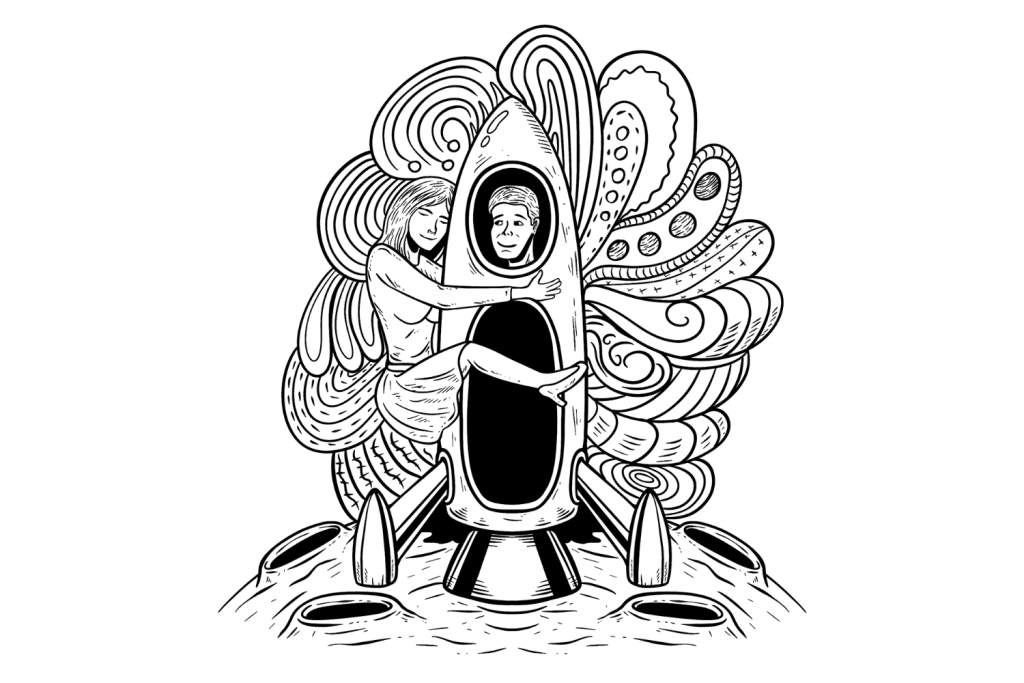
Online self-assessments indicate the following effect profile for DOC:
- Physical effects — Stimulation, Spontaneous bodily sensations, Physical euphoria, Changes in the perception of bodily form, Bodily control enhancement, Tactile enhancement, Nausea, Vasoconstriction, Increased blood pressure, Increased heart rate, Appetite suppression, Increased perspiration, Muscle contractions, Muscle spasms, Muscle cramps, Difficulty urinating, Dehydration, Dry mouth, Temperature regulation suppression, Diarrhea, Teeth grinding, Pupil dilation, Increased salivation, Seizures
- Visual effects — Visual acuity enhancement, Colour enhancement, Pattern recognition enhancement, Drifting, Color shifting, Depth perception distortions, Perspective distortions, Symmetrical texture repetition, Tracers, After images, Brightness alteration, Diffraction, Transformation, Internal hallucinations, External hallucinations
- Cognitive effects — Anxiety & Paranoia, Conceptual thinking, Thought acceleration, Thought connectivity, Empathy, Affection, Sociability enhancement, Cognitive euphoria, Analysis enhancement, Novelty enhancement, Immersion enhancement, Emotion enhancement, Increased music appreciation, Increased sense of humor, Laughter fits, Memory suppression, Ego death, Increased libido, Time distortion, Wakefulness, Auditory enhancement, Auditory hallucinations
The biggest difference when comparing DOX compounds and other psychedelics is the considerable level of stimulation they provide. More traditional psychedelics like LSD and magic mushrooms can provide an intense experience, but it’s normally a sedated and relaxed one.
On the other hand, a compound like DOC brings considerable stimulation, often producing feelings of wanting to move around and do physical activities. This potent level of stimulation can often become overwhelming and unpleasant.
It is important to understand the following: the list above should only be considered as a potential spectrum of effects. DOI administration will not reliably produce the same effects. However, users can expect a more expansive range of effects the more DOI they consume.
References
- Oeri, H. E. (2021). Beyond ecstasy: Alternative entactogens to 3, 4-methylenedioxymethamphetamine with potential applications in psychotherapy. Journal of Psychopharmacology, 35(5), 512-536.

